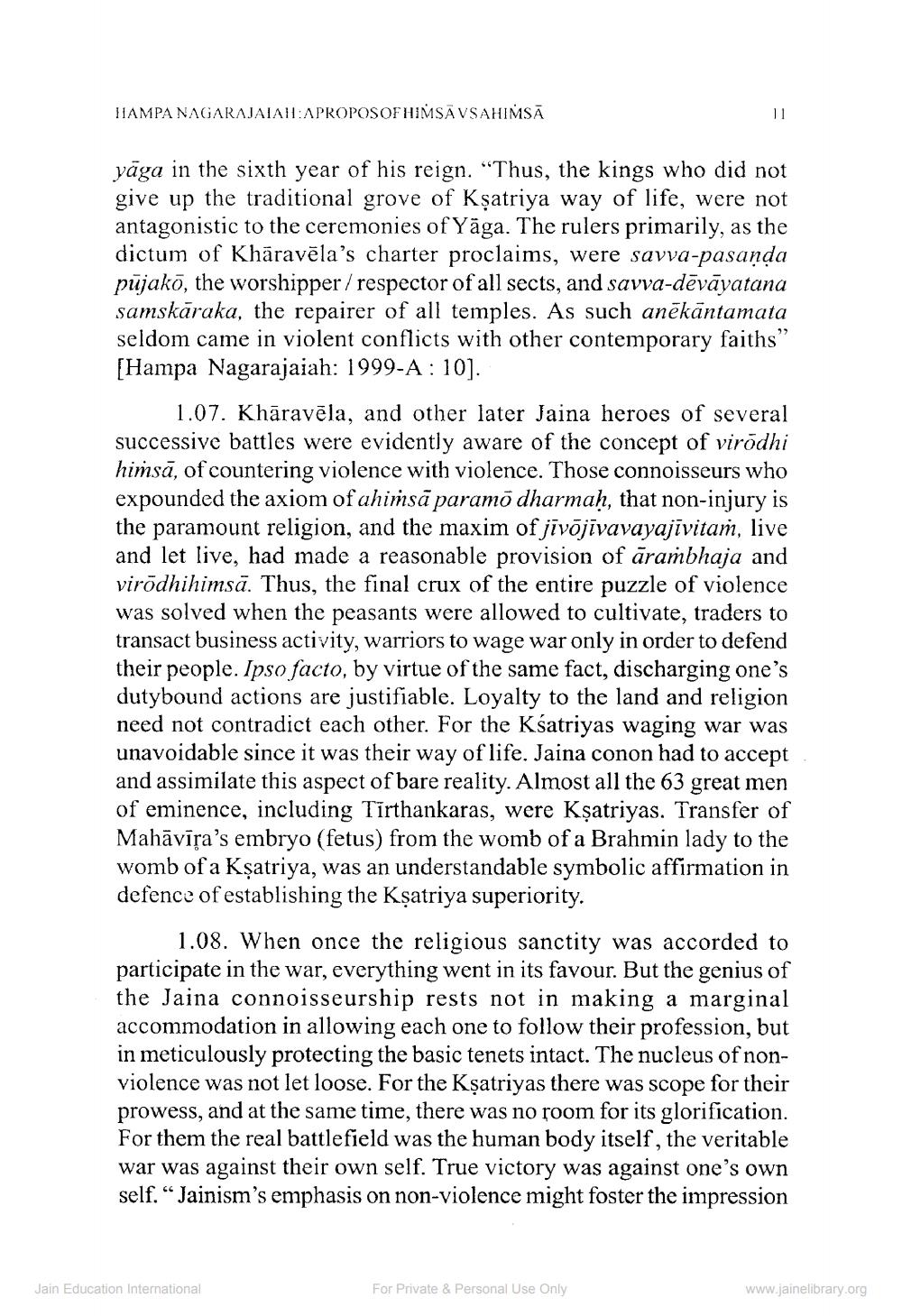________________
HAMPA NAGARAJAIAH: APROPOS OF HIMSA VSAHIMSA
yaga in the sixth year of his reign. "Thus, the kings who did not give up the traditional grove of Ksatriya way of life, were not antagonistic to the ceremonies of Yaga. The rulers primarily, as the dictum of Kharavela's charter proclaims, were savva-pasanda pujakō, the worshipper/respector of all sects, and savva-dēvāyatana samskāraka, the repairer of all temples. As such anekāntamata seldom came in violent conflicts with other contemporary faiths' [Hampa Nagarajaiah: 1999-A: 10].
11
1.07. Khāravēla, and other later Jaina heroes of several successive battles were evidently aware of the concept of virōdhi himsă, of countering violence with violence. Those connoisseurs who expounded the axiom of ahimsā paramō dharmaḥ, that non-injury is the paramount religion, and the maxim of jīvōjivavayajīvitam, live and let live, had made a reasonable provision of arambhaja and virōdhihimsā. Thus, the final crux of the entire puzzle of violence was solved when the peasants were allowed to cultivate, traders to transact business activity, warriors to wage war only in order to defend their people. Ipso facto, by virtue of the same fact, discharging one's dutybound actions are justifiable. Loyalty to the land and religion need not contradict each other. For the Ksatriyas waging war was unavoidable since it was their way of life. Jaina conon had to accept and assimilate this aspect of bare reality. Almost all the 63 great men of eminence, including Tirthankaras, were Kṣatriyas. Transfer of Mahāvīra's embryo (fetus) from the womb of a Brahmin lady to the womb of a Ksatriya, was an understandable symbolic affirmation in defence of establishing the Ksatriya superiority.
1.08. When once the religious sanctity was accorded to participate in the war, everything went in its favour. But the genius of the Jaina connoisseurship rests not in making a marginal accommodation in allowing each one to follow their profession, but in meticulously protecting the basic tenets intact. The nucleus of nonviolence was not let loose. For the Kṣatriyas there was scope for their prowess, and at the same time, there was no room for its glorification. For them the real battlefield was the human body itself, the veritable war was against their own self. True victory was against one's own self." Jainism's emphasis on non-violence might foster the impression
Jain Education International
For Private & Personal Use Only
www.jainelibrary.org




